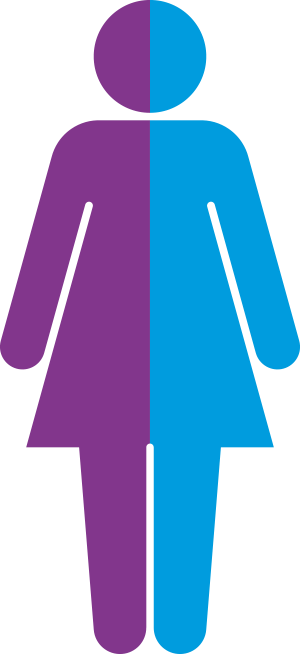Despite the polarizing headlines, the passionate marchers and the challenging arguments in parliaments and the halls of the UN, abortion is more than a political topic for debate.
Abortion is, at heart, a critical decision and essential health need for nearly 56 million women, girls, and their families each year. Deciding whether and when to have children – and having the options and means to act on that decision – is a fundamental human right for all people. Indeed, the ability of a woman or girl to safely decide not to continue through a full pregnancy may be the key that unlocks numerous opportunities in life, including education, employment, financial security and good health.
Download the full report:
Her In Charge (English)
Elle se prend en mains (Français)
Ellas a cargo (Español)
million abortions a year are unsafe
million women a year will have an abortion
Understanding abortion
Abortion is a common experience
56 million women each year opt out of an unintended pregnancy.
Read more
When an unintended pregnancy occurs, a woman’s ability to have a safe abortion can be transformational– the key that unlocks opportunities for her education, employment, good health and well-being.
Facts about abortion are plentiful and well documented but not always adequately used in policymaking. Abortion is a common experience: nearly 56 million women and girls each year decide not to move through a full pregnancy. Yet in much of the world, gender inequality and discrimination limit women’s options for safe abortion, and stigma keeps it from being openly included as a core element of sexual and reproductive health and rights (SRHR) care.
Download the full report:
Her In Charge (English)
Elle se prend en mains (Français)
Ellas a cargo (Español)
Although abortion is legal in Uruguay, it’s not legal in people’s minds… It’s not about defending abortion. It is about defending women’s freedom to decide
Maria, Uruguay
Adolescents and young women face barriers to contraception and safe abortion
Read more
Most very young adolescents live in countries where abortion is legally restricted.
Young people often lack the financial resources and transportation needed to access abortion care.
Young people face double stigma – social and religious condemnation of pre-marital sex, as well as the stigma associated with abortion.
Comprehensive sexuality education (CSE) may fail to address abortion or may include it in an inaccurate or stigmatizing way.
Young women are less able to negotiate safer sex, and of the 60% of adolescents who want to avoid pregnancy, most are not using any method of contraception.
Download the full report:
Her In Charge (English)
Elle se prend en mains (Français)
Ellas a cargo (Español)

About half of adolescent pregnancies
are unintended
97% of the world’s unsafe abortions occur in low and middle income countries continue to experience
The challenge: Accelerating progress to reach all women with safe abortion
Despite some progress, major gaps in safe abortion provision remain, driving millions of women to seek abortion outside formal health systems.
Read more
Global efforts to vastly expand women’s access to modern contraception are still insufficient. As a result, women are not able to plan their pregnancies. About half of the 1.6 billion women of reproductive age living in low- or medium income countries want to avoid a pregnancy, but nearly a quarter of them are not using modern contraceptive methods. The result is that about 44% of all pregnancies worldwide are unintended, with women denied their right to decide if, when and how many children to have.58 Global efforts to reduce the unmet need for modern contraceptives must be accelerated.
Download the full report:
Her In Charge (English)
Elle se prend en mains (Français)
Ellas a cargo (Español)
A call on governments for the expansion of medical abortion
Medical abortion is far from being a new strategy. Women have used medical abortion for years, and many organizations have helped them do so.
Read more
However, medical abortion has not yet reached the scale necessary to dramatically avert maternal mortality rates stemming from unsafe abortion and to be truly in women’s hands. Its expansion needs to be exponential.
Governments need to ensure that medical abortion is embedded in health systems by providing:
- The supportive environment to ensure women can access safe and legal abortion, including the political, social, economic, health and legal frameworks;
- The quality, availability and affordability of medical abortion drugs by registering misoprostol and mifepristone in the list of essential medicines of their countries.
- Women have full information about medical abortion risks factors, dosage and have access to post-abortion care and contraception.
- Women have all options available to them: either medical or surgical abortion, in a health facility or at home – whatever they prefer.
- Medical abortion is available at the community level. Medical abortion facilitates task-sharing, which is particularly important in low-resource settings where primary-care level and lay workers should be trained and equipped to administer abortion.
Download the full report:
Her In Charge (English)
Elle se prend en mains (Français)
Ellas a cargo (Español)
of all pregancies worldwide
are unintended
This was the cheapest way to proceed (legally with professional help) and I thought it would be easily done. But in France you need to wait a week before the doctor can start the abortion, in case you change your mind.
Emmy, France
The needs are clear. The time to act, together, is now.
Download the full report below:
Her In Charge (English)
Elle se prend en mains (Français)
Ellas a cargo (Español)